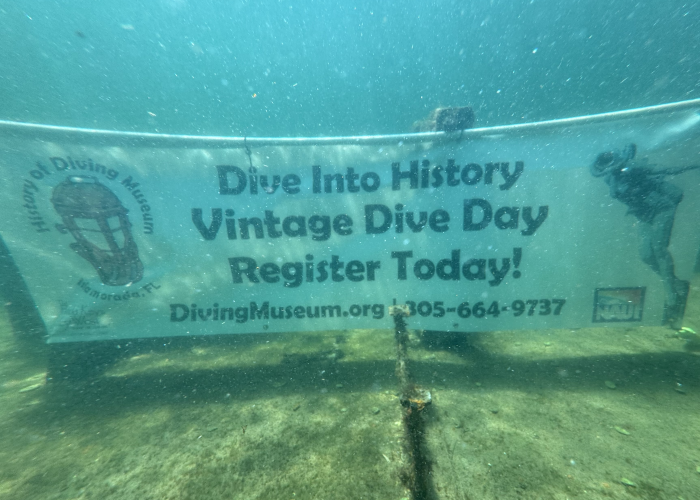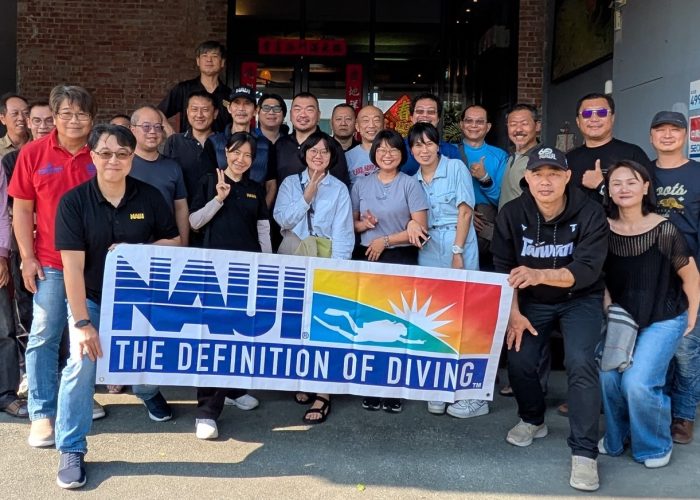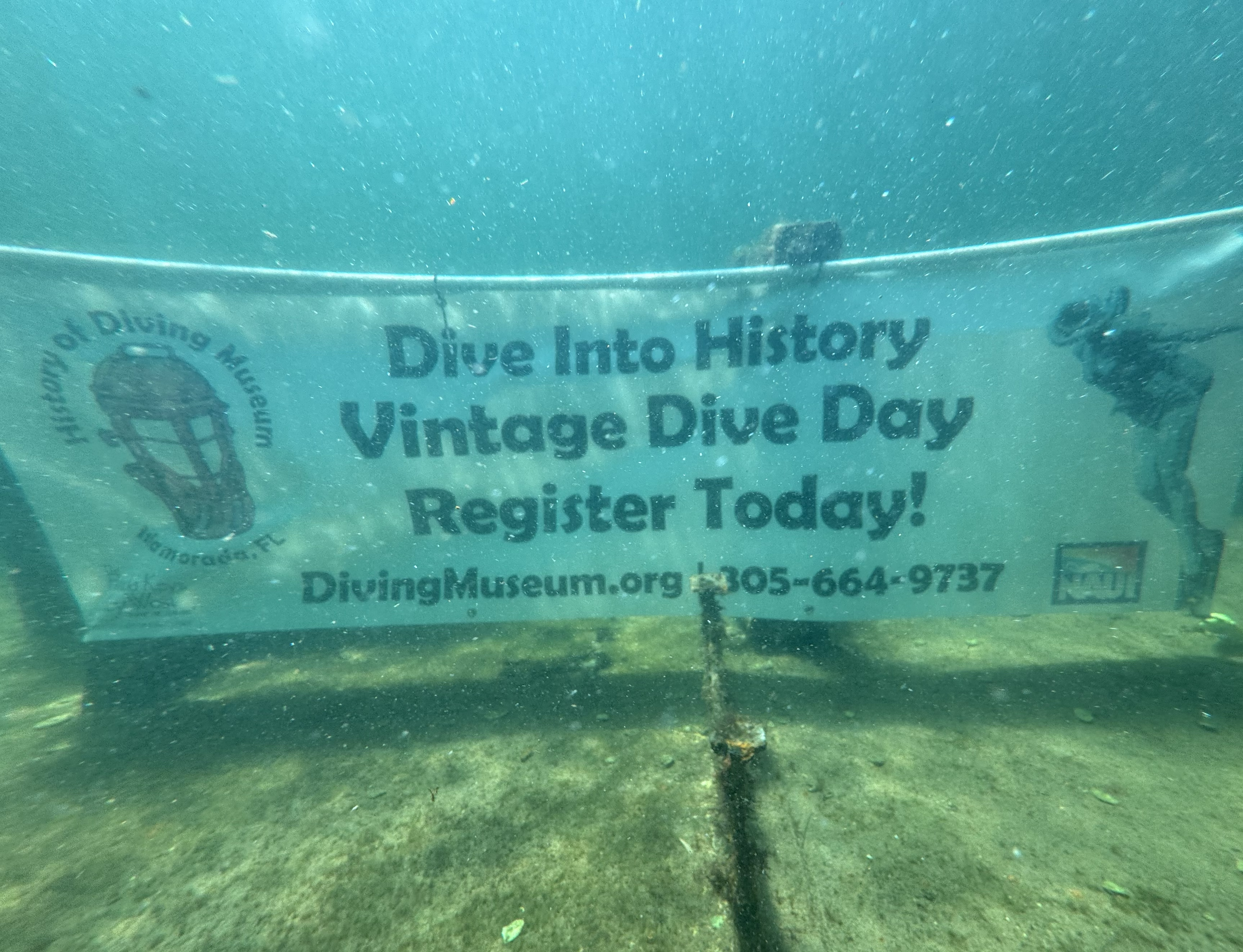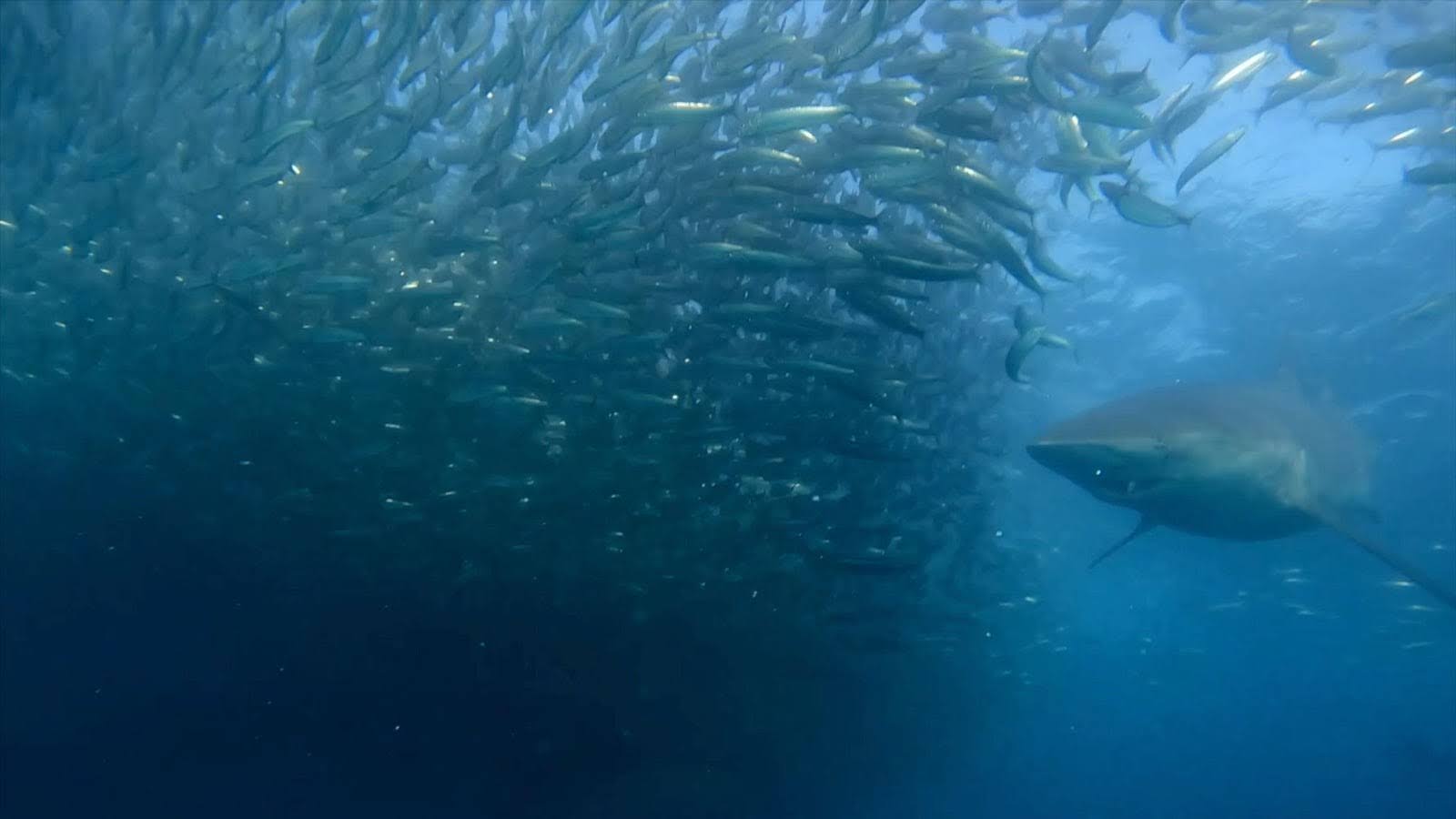As NAUI dive leaders, it’s imperative to execute proper setup and dive planning. Without it, you not only run the risk of creating a potentially unsafe situation but also run the risk of falling short of our high standard of training today’s most competent and safe divers.
“I witness way too many open-water students exiting the water from their first dives with their heads down and their shoulders slumped forward,” says Butch Hendrick (NAUI 1724), owner and founder of Lifeguard Systems. Hendrick has been in the dive industry for five and a half decades. Due to his love for the sport, it pains him when he sees new divers not having the kind of experience they should. “What I look for is to see them exiting the water with their shoulders back, heads up, laughing, smiling, and talking excitedly about how great the dive was. But how do we make new divers feel this way?” he asks. “We’ve got to give them the skills needed to feel self-sufficient and secure while diving so we’re not just herding them around but making them confident, so they can dive safely on their own.”
This poses the question —— how do we, as professionals, do a better job of this? It starts with proper preparation and planning before the actual execution of the dives. For example, just because a student is wearing a required piece of gear doesn’t necessarily mean they’re wearing it correctly or that the correct size was available for them to wear at all. “I frequently see new divers with a large gap between their back and the cylinder because the BC is either too big or needs to be adjusted better,” says Hendrick. “If the cylinder isn’t snug to the diver’s back, they feel like it is controlling them, not the other way around.” This is just one example that Hendrick points out. Other common problems he observes include new divers mounting their cylinder facing the wrong direction and worst of all, wearing too much weight. “I blame their training if divers don’t know how to weight themselves properly,” continues Hendrick. “I see divemasters and instructors going by an overly simplified formula, ‘10 percent of the diver’s weight plus 1 to 2 kilograms (2 to 4 pounds).’”
“There’s only one way to properly check a diver’s buoyancy,” continues Hendrick, “They have to physically get in the water and do a buoyancy check wearing all of their gear. With the diver’s BC empty, at approximately 50 percent of exhalation, the diver should start to sink. If the BC has any air in it and they still need to kick to stay at the surface, they’re over-weighted.” Even if a diver performs this buoyancy check, buoyancy problems can still arise at the end of a dive due to characteristics of the cylinder itself. “Some of these new steel cylinders,” cautions Hendrick, “are about 4 kilograms (9 pounds) negatively buoyant at the start of the dive, and nearly 3 kilograms (6 pounds) positively buoyant towards the end of the dive.” That 7-kilogram (15-pound) difference in buoyancy will wreak havoc with a diver’s buoyancy, preventing them from doing a safe ascent or a safety stop. “Dive professionals need to read up on the specifications of any cylinder being used under their supervision so they can avoid these kinds of problems.”
Butch Hendrick’s top five gear-preparation tips:
All of the diver’s equipment should fit them properly. The BC should have no excess space between it and the diver, and the cylinder needs to be snug on the diver’s back.
- In addition to the buoyancy check previously mentioned, divers should do an additional test with integrated weight systems: make sure they can still remove the weight system with the BC fully inflated. If they can’t, find out why, or try a different model.
- Make sure the diver’s fins fit correctly. The heel of an open-heeled fin should come within 1.25 to 2.5 centimeters (0.5 to 1 inch) from the end of the diver’s heel. If the fin doesn’t fit right, the ankle can’t work right. And if the ankle can’t work correctly, the diver can’t kick properly. It’s especially important to make sure your divers know how to kick correctly when using split fins because these fins are very forgiving, but when a diver needs to power through something, they need to know correct technique.
- Eliminate dangling stuff. In general, if something moves when you move, it needs to be secured, so make sure gauges, hoses, octopus regulators or anything else that’s attached to the diver is not free to move and become a potential entanglement hazard.
- Make sure the diver has experience in the kind of exposure suit they are about to wear into the open water. If the first time they experience gloves and a hood is in the open water, there are bound to be issues. Allow students time in a controlled environment to don and test the kind of exposure suit they’ll be wearing in the open water.
On DECO I Go Through My Life
Making sure that all divers under your supervision have the appropriate gear and that it’s adjusted properly is only the first step in dive preparation. The next step is making sure that all divers understand the plan thoroughly, so they enter the water with the confidence to enjoy it. Terrence Tysall (NAUI 16627), NAUI’s Director of Training, uses a mnemonic to help divers remember the critical components of planning a dive. “On DECO I Go Through My Life,” recites Tysall. “This is one of the first things I taught my kids when they started to learn to dive. Now my son lectures other divers on ODIGTML,” Tysall proudly describes. “This list can be gone through in a minute or two, but it can save lives and is repeatable at every level of training.” There’s absolutely no harm in repeating this dive planning mnemonic for each and every dive no matter how relatively mundane it may seem. See our sidebar for a link to a reference document that helps separate points of this planning mnemonic with tips specific to recreational air, recreational nitrox, and technical diving considerations.
- O = Oxygen: Divers have to keep track of their central nervous system (CNS) oxygen exposure clock. For most non-decompression dives, a diver wouldn’t typically exceed 100 percent CNS exposure, but for technical/mixed gas/rebreather dives, tracking the CNS clock is critical to a diver’s safety. Consult your oxygen exposure limits table.
- D = Decompression: During this part of dive planning, divers determine what gas they are going to use, maximum operating depths for that gas, and what kinds of decompression obligation they may have at the planned depth. Proper planning helps avoid decompression sickness. For recreational dives, divers should discuss the use of their computers and make sure they are familiar with all functions of their computer.
- I = Inert Gas Narcosis: What level of narcosis do you expect each diver in your class or on your team to experience at the planned depth? Propose maximum depths according to the person you think may be affected the most. Make sure that newer divers know what narcosis is and how to manage it should they experience it.
- G = Gas Management: This topic covers several crucial issues. First off, one of the lost arts Hendrick frequently talks about is knowing a diver’s Respiratory Minute Volume Rate (RMV) – a measure of the volume of gas a diver breathes in one minute while at the surface. With this useful number in hand, you can calculate the volume of gas each diver will need at the planned depth. The highest RMV rate in the group is the rate you should use to perform calculations for the entire group. In other words, plan as if your whole group consumes gas as fast as the fastest consumer. Finally, the group must agree upon the rule you will all follow when it comes to turning the dive around. Will you use the rule of thirds – recommended for technical diving? Or turn the dive at half plus 14 bar (200 psi) – the recreational no-decompression diving recommendation? It’s imperative that all in the group adhere to the same rule and no one questions when any diver gives the signal to turn around.
- T = Thermal Management: What kind of exposure protection will be needed considering the total duration of the planned dive and the coldest temperature your group will encounter? This is especially important with technical diving and long decompression times.
- M = Mission: The mission could be as ordinary as dropping down to a reef at 10 meters (30 feet) and merely fish-watching, or it could be as complicated as mapping an uncharted cave in a remote jungle. Regardless, all divers should share the same mission on each dive, or inevitable conflicts of interest will arise that result in scattered divers or potentially dangerous situations.
- L = Logistics: Logistics could range from merely determining your entry and exit points to lining up stage bottles, pallets full of gear, recompression chambers, etc. Work all of this out in advance.
As diving professionals, it’s important to instill in your students this type of meticulous dive planning that wil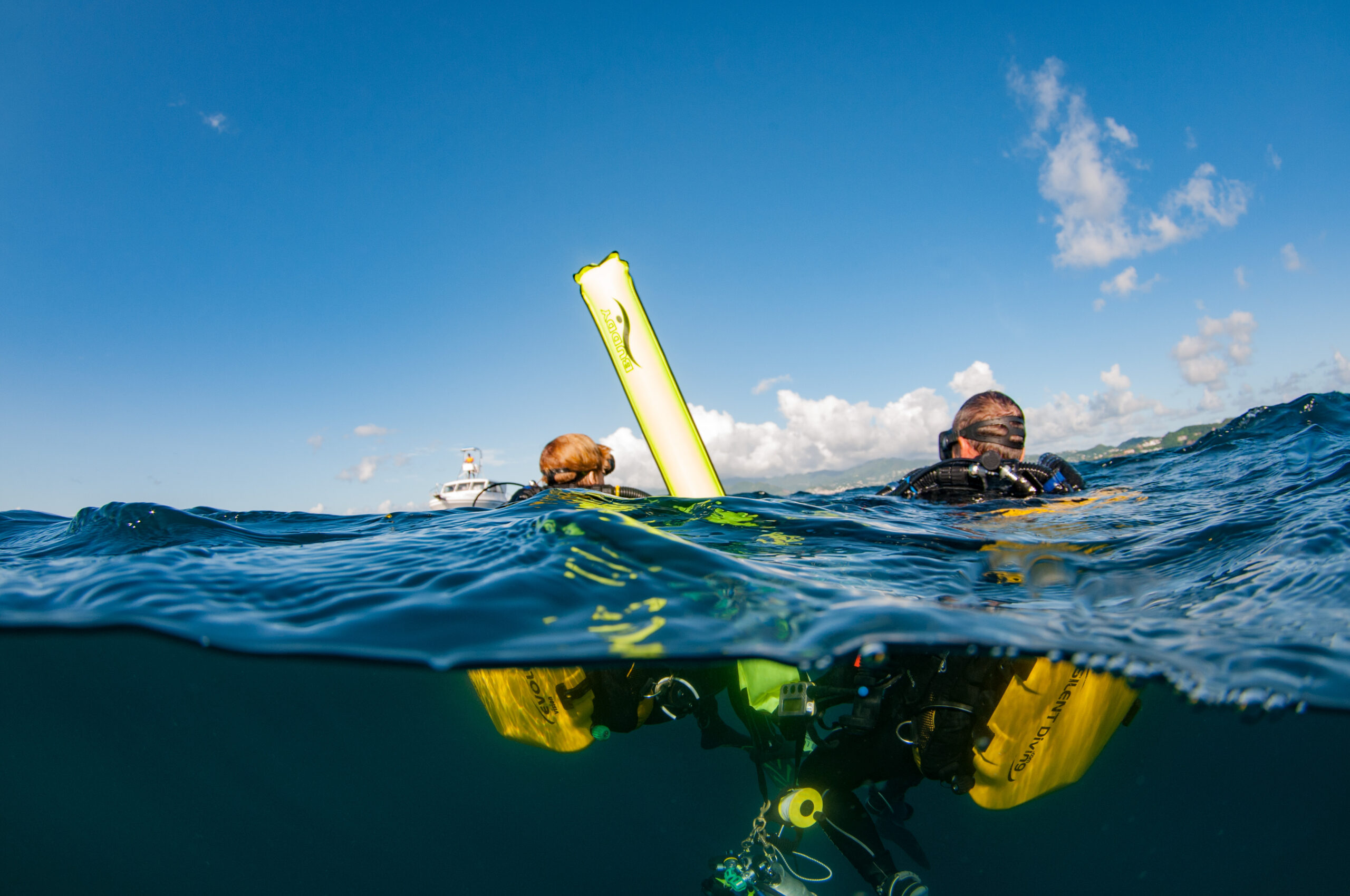
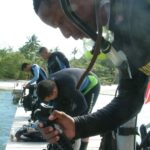 All of the diver’s equipment should fit them properly. The BC should have no excess space between it and the diver, and the cylinder needs to be snug on the diver’s back.
All of the diver’s equipment should fit them properly. The BC should have no excess space between it and the diver, and the cylinder needs to be snug on the diver’s back.